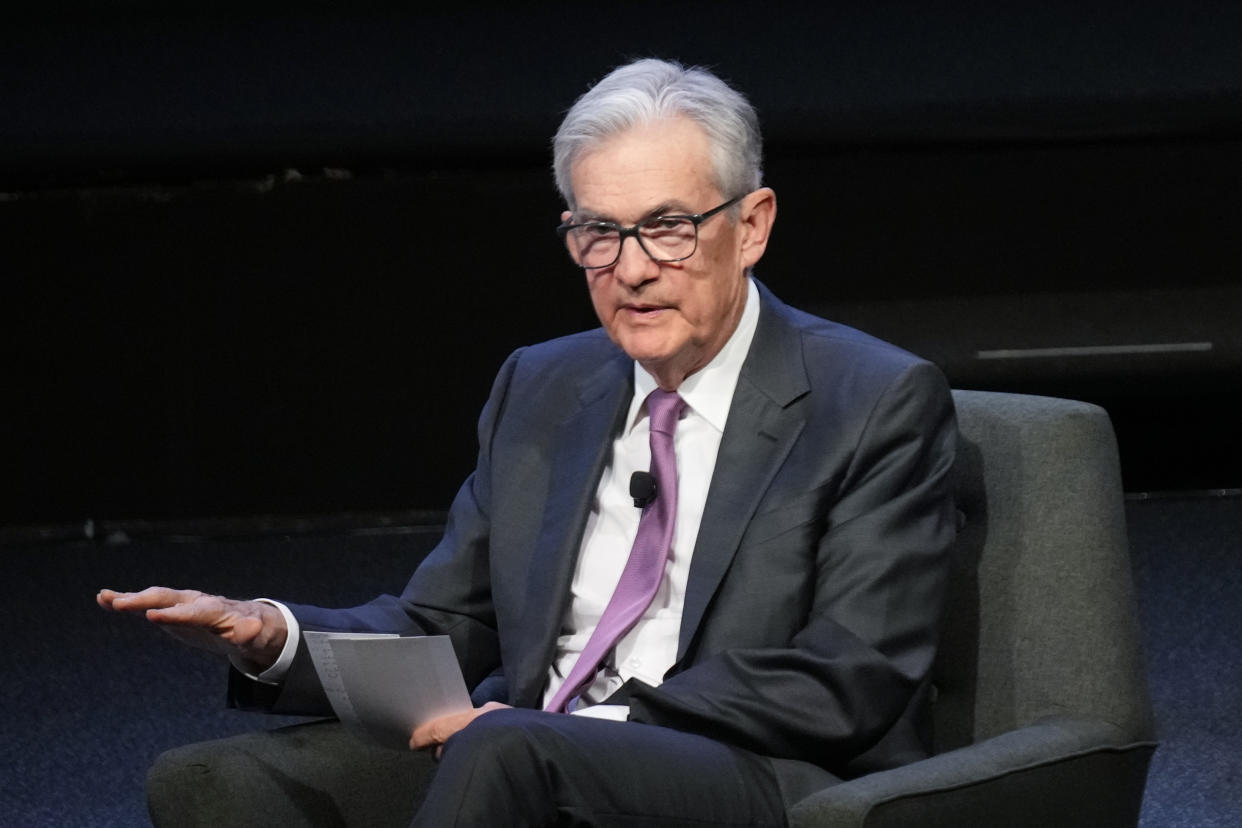Fed's preferred inflation gauge shows biggest monthly jump since May
The Federal Reserve's preferred inflation metric showed prices over the prior month jumped by the most since May while annual price increases continued to cool in September, sharpening the prospects for the central bank to keep interest rates "higher for longer."
"Core" Personal Consumption Expenditures (PCE) Index, which excludes the volatile food and energy categories, showed prices rose 0.3% in September and 3.7% from the prior year, data released by the Commerce Department on Thursday showed. The 0.3% increase in core PCE was driven by categories like cars, prescription drugs, and travel.
On a headline basis, which includes all categories, PCE rose 3.4% over last year and 0.4% month-over-month. September's annual rise in "core" PCE was the smallest since May 2021 and marks the third-straight month prices have increased at a slower annual rate.
Core PCE is the inflation measurement preferred by the Fed, as PCE — unlike the more widely cited Consumer Price Index (CPI) — feeds directly into GDP. The Fed targets 2% annual inflation.
The core PCE figure "reflects the stickiness of core services inflation, which is still too strong to be consistent with inflation falling back to the Fed's 2% target," Oxford Economics lead economist Michael Pearce wrote in reaction to the data.
In a note to clients on Friday, Ian Shepherdson, chief economist at Pantheon Macroeconomics, said this data is, "not yet good enough for the Fed to declare victory, so next week's FOMC meeting will bring more of the same message: The fall in inflation is welcome but not yet definitive."
The Fed is expected to keep rates unchanged in a range of 5.25%-5.50% at the conclusion of its two-day policy meeting on Nov. 1.
Personal spending increased 0.7%, outweighing personal income, which rose 0.3%.
"Disposable income growth has come under pressure as wage and job growth slows," Pearce said. "The weakness also reflects a slight fiscal tightening as transfer payments decline and as tax payments increase."
"With incomes falling, higher spending is being funded by lower saving, with the personal saving rate declining to 3.4% in September, its lowest since December 2022," the economist continued.
"While we estimate there is still a considerable stock of excess saving left over from the pandemic, that is now mostly concentrated among higher income households and appears to be increasingly treated as wealth, so we expect the boost to spending from lower saving to wane from here. We also expect some increase in precautionary saving as the job market slows."
The price of goods edged up 0.9% in September from a year ago, higher than August's 0.7% rise. Durable goods fell another 2.3% after falling 1.9% in August while non-durable goods ticked up 2.7%.
Services saw prices rise by 4.7% — below August's 4.9% increase. Food prices also came in lower compared to the prior month, with September's reading showing a 2.7% yearly rise compared to a 3.1% jump in August.
Energy goods and services were flat in September after falling 3.6% in August.

Government data released on Thursday showed the US economy grew at its fastest pace in nearly two years during the past three months as consumers stepped up their spending despite a high interest rate environment.
The hot GDP print comes as inflation has remained significantly above the Federal Reserve's 2% target. A labor market that, while softening in certain areas, is still tight, suggests the Federal Reserve could continue to raise interest rates. The Federal Reserve’s latest meeting minutes showed policymakers support a more restrictive rate environment.
Read more: What the Fed rate-hike pause means for bank accounts, CDs, loans, and credit cards
Cleveland Fed president Loretta Mester said last week she still sees the possibility of one more rate hike this year.
But markets still expect the central bank to keep rates steady at its meeting later this month. Following the release of the data, markets were pricing in a roughly 99% chance that the Federal Reserve keeps rates unchanged at its upcoming policy meeting, according to data from the CME Group.
Alexandra Canal is a Senior Reporter at Yahoo Finance. Follow her on Twitter @allie_canal, LinkedIn, and email her at alexandra.canal@yahoofinance.com.
Click here for the latest economic news and indicators to help inform your investing decisions.
Read the latest financial and business news from Yahoo Finance
